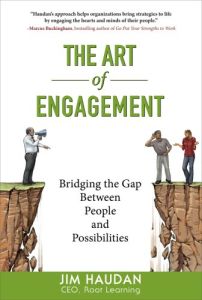Join getAbstract to access the summary!

Join getAbstract to access the summary!
Jim Haudan
The Art of Engagement
Bridging the Gap Between People and Possibilities
McGraw-Hill, 2008
What's inside?
Engaging your employees in strategic change requires a process of honesty, clarity, discussion and big-picture thinking.
Recommendation
Organizational leaders spend considerable time and effort carefully developing strategies to advance their corporate goals. However, they often fail to communicate these strategies compellingly to their employees – the people who must execute every step. Therefore, it is no surprise that most such strategies fail. Management consultant Jim Haudan recommends a strategy-sharing approach using visuals, metaphors and stories to engage employees. He offers tactics for getting them on board to execute your strategy and organizational directives. One negative: Many of the illustrations (reductions from original table-size artwork) are busy and even fuzzy. Some feature tiny text, which illustrates – in the breech – Haudan’s point about using clear visuals to communicate and engage. Otherwise the book is superior, very insightful and nicely written. Haudan uses case studies to demonstrate the effectiveness of his employee engagement process. getAbstract believes leaders can benefit from learning his tactics for communicating strategies so employees understand them, support them and actually implement them.
Summary
About the Author
Jim Haudan is co-founder and CEO of Root Learning, a management-consulting firm.


















Comment on this summary